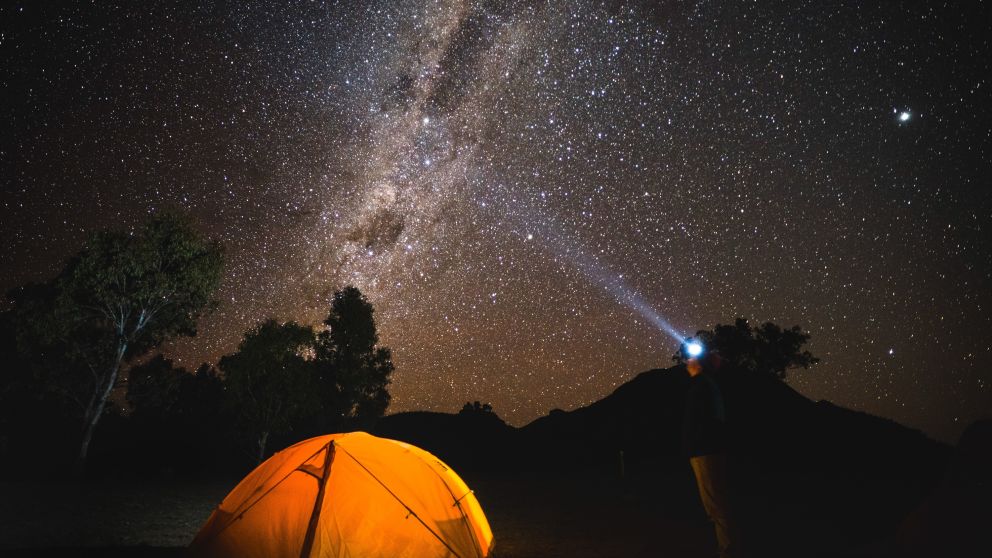
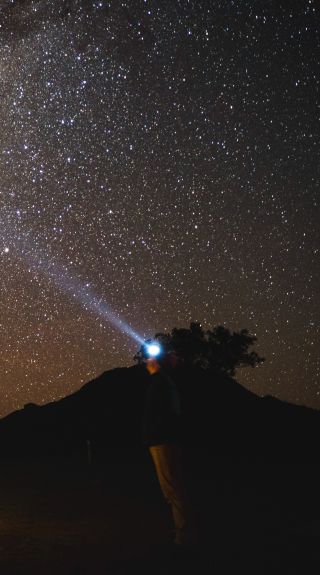
An Unexpected Adventure: Stargazing in Coonabarabran
Dark Sky Park in Warrumbungle National Park, Country NSW


Destination NSW
Consider yourself something of an amateur stargazer? Coonabarabran might just be the best place you’ve never heard of.
Coonabarabran might be small, with a population of just 2,500 residents, but it has a mighty big reputation. It’s known as Australia’s stargazing capital thanks to its gateway position near the edge of Warrumbungle National Park in Central NSW.
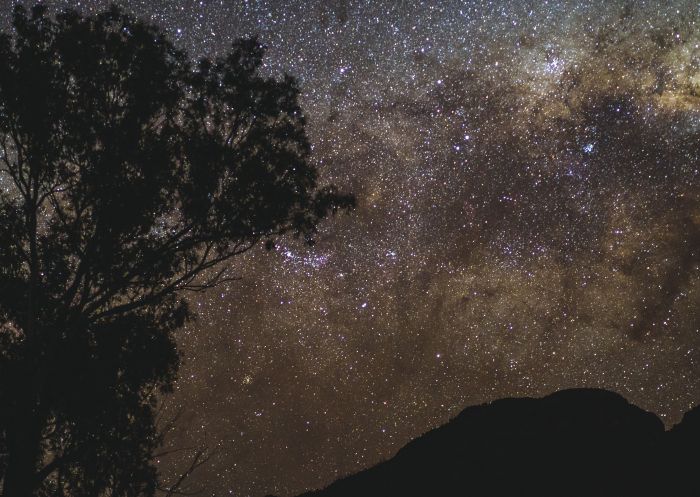
The night sky filled with bright stars over the Dark Sky Park, Warrumbungles, Country NSW
In 2016, the park became the first place in Australia to be recognised as an International Dark Sky Park. The designation has helped draw global attention to the star-spangled show that’s available to anyone who cares to look up after dark, where you’ll see the glory of the Milky Way, constellations, planets and a great pincushion of stars. The town is located about 500km northwest of Sydney and 20km east of Siding Spring Observatory.
All of which makes it the perfect destination for amateur stargazers.
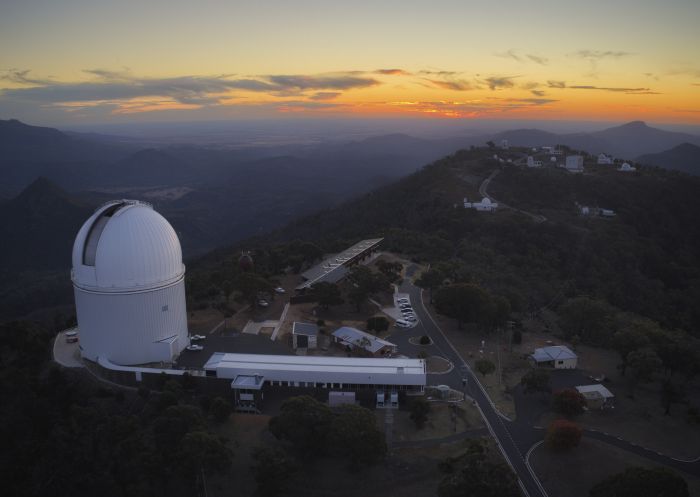
Sunset over Siding Springs Observatory, Coonabarabran, Warrumbungle National Park, Country NSW
With Warrumbungle National Park’s Dark Sky Park designation, this spot was officially recognised as having the best stargazing in NSW. The International Dark Sky Places conservation program recognises more than 130 global spots with top-notch stewardship of the night sky (two other remote Australian areas are recognised in the program – South Australia’s Swan Reach Conservation Park and outback Queensland’s The Jump-Up, a mesa near Winton).
So how come the night sky in this area resembles a nocturnal glitter-bomb? The answer lies in its low humidity, high altitude and distance from light-polluting big cities. Regulations also control the lighting in nearby towns such as Coonabarabran – and thanks to the goodwill of residents, there’s been no increase in the town’s sky-glow over the years.
Siding Spring Observatory, Australia’s most important visible-light astronomical observatory, sits on the edge of Warrumbungle National Park. It observes very faint objects at very great distances by collecting and analysing light that’s travelled from galaxies, stars and planets billions of lights years from Earth. However, as this light nears Earth, it can be disturbed by atmospheric factors such as clouds and light pollution.
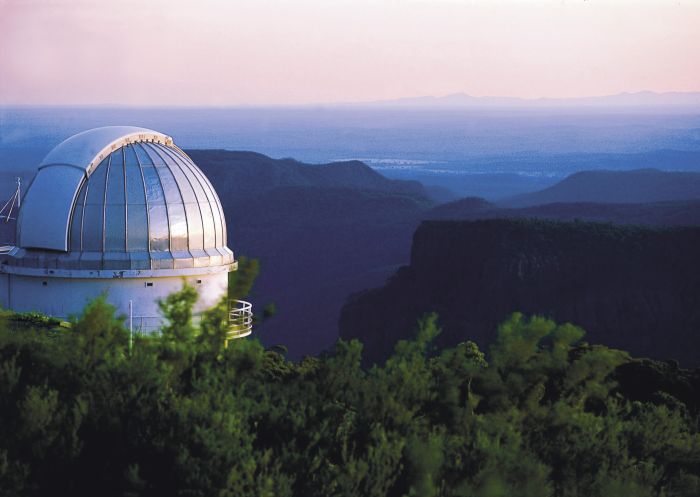
Siding Spring Observatory, Coonabarabran
With more than 20 telescopes, the observatory is one of the world’s few that can observe the entire Southern Hemisphere sky. It’s vital to our understanding of the universe and the endeavours of astronomers. You can book a day tour of its Anglo-Australian Telescope several times a week, but as it’s a working research facility, it doesn’t open at night to the public.
Before reaching Siding Spring, stop and explore the 3D planetary-themed signage along the way. Look out for the World’s Largest Virtual Solar System Drive signs, which are carefully positioned along five drives leading to Siding Spring Observatory to replicate their relative distance from the sun – only on a scale that’s 38 million times smaller.
If you take the Baradine Road from Coonabarabran for about 10km you’ll reach the Milroy Observatory, helmed by comet-discoverer Donna Burton. Bring all your burning space questions along for ‘Donna the Astronomer’ to answer when you head to one of the night sky shows.
If you’re ready to work for spectacular vistas, set out on the iconic Breadknife and Grand High Tops walk – a 14.5km looping hike that’s one of the state’s best. Get up close to striking formations within the ancient volcanic landscape such as the Breadknife (towering 90m above the valley floor), Belougery Spire, Bress Peak and Crater Bluff. Check the skies for peregrine falcons and wedge-tailed eagles, and in spring enjoy a profusion of floral colour thanks to yellow wattles, orange pea flowers, purple hoveas and white daisy bushes.
Rock hounds can admire some of the treasures of the area, such as rare, colourful zeolite crystals, which have been unearthed from the Warrumbungle Range at Crystal Kingdom, a mineral and fossil shop and museum in Coonabarabran’s north.
It’s an unlikely place to find ancient megafauna but the Coonabarabran Visitor Information Centre, on the Newell Highway south of town, houses the skeleton and skull of the largest marsupial to have ever roamed planet Earth. The Diprotodon is often likened to a giant wombat – and this one’s remains were found in the bed of Cox’s Creek near Tambar Springs, 70km to the east, in 1979. Visit the Australian Museum Diprotodon Exhibition at the centre to find out more information on other megafauna believed to have existed at around the same time as this beast.
In town, try Feathers Cafe for yummy muffins, friands and coffee. Its fridge also stocks rounds of Warrumbungle Wensleydale, a cheese made in Mendooran to the south of Coonabarabran. For dinner, head to the Black at the Country Gardens Motel. It earns raves for dishes such as Szechuan kangaroo and coconut rice, Cajun mushroom burgers and pizza. On the way to the park, track down Tibuc Gardens Cafe and Accommodation in the foothills of the Warrumbungles to fuel up with breakfast, lunch, coffee or cake (Friday to Sunday). The bush property also includes a two-bedroom cottage for overnight stays.
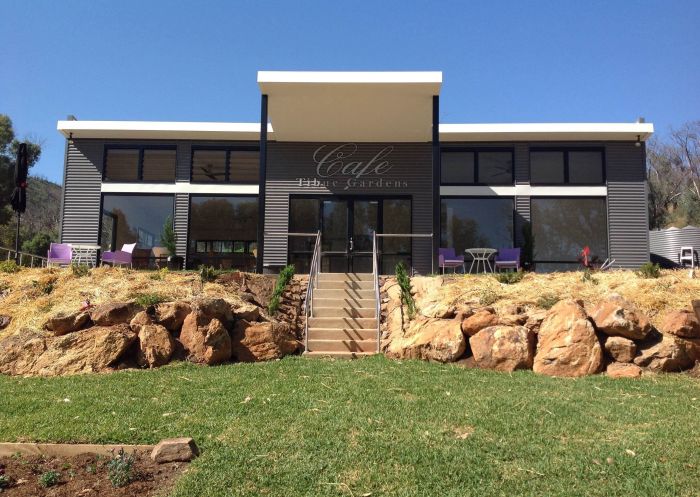
Tibuc Gardens Cottage, Coonabarabran, Country NSW
Within the national park, Camp Blackman is a popular base, thanks to facilities that include hot water, picnic tables, drinking water and barbecues for the 105 sites. It’s not only popular with humans – look out for plenty of kangaroos, kookaburras and sulphur-crested cockatoos, too.
If you want a more secluded option, try Balor Hut campground, which houses both a historic walkers’ hut and spots for tent campers. The hut, with its slab bunks, was built between 1958 and 1962, when the network of walking tracks was under construction. Balor Hut was one of five huts strung out along the Grand High Tops and is the last one left standing. It can only be accessed via a 5km hike from the car park. Ogma Gap campground, between Grand High Tops and Mt Exmouth, is another walk-in option if you’re after a real bush-camp experience.
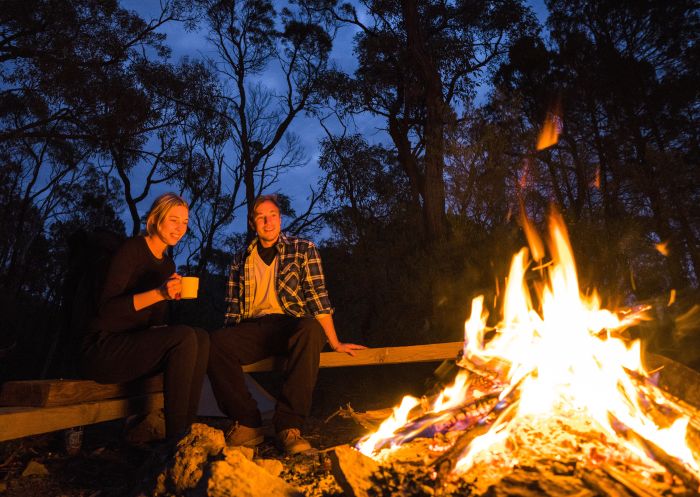
Balor Hut Campground in Warrumbungle National Park, Country NSW
For a more unusual accommodation option close to town, pick Skywatch Observatory Domestays – a two-bedroom suite where you can also access a private observatory and telescope, and play a round of mini-golf on the astronomy-themed course.
All the insider news, tips and inspiration you need to plan your next trip, delivered straight to your inbox.
Sign UpVisitNSW.com is the official tourism site for Destination NSW.
© Copyright 2023 Destination NSW. All rights reserved